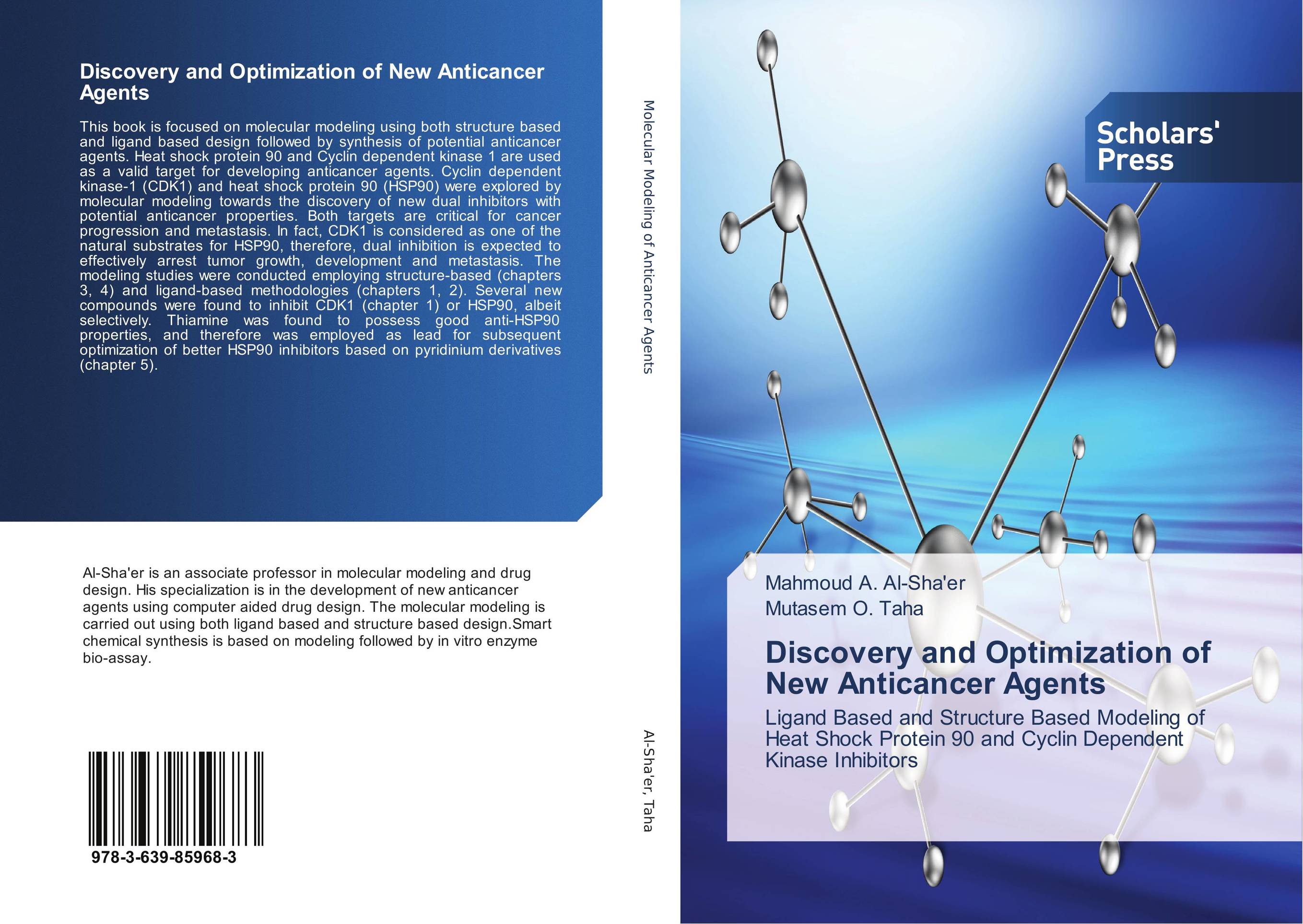| Поиск по каталогу |
|
(строгое соответствие)
|
- Профессиональная
- Научно-популярная
- Художественная
- Публицистика
- Детская
- Искусство
- Хобби, семья, дом
- Спорт
- Путеводители
- Блокноты, тетради, открытки
Discovery and Optimization of New Anticancer Agents. Ligand Based and Structure Based Modeling of Heat Shock Protein 90 and Cyclin Dependent Kinase Inhibitors

В наличии
| Местонахождение: Алматы | Состояние экземпляра: новый |

Бумажная
версия
версия
Автор: Mahmoud A. Al-Sha'er and Mutasem O. Taha
ISBN: 9783639859683
Год издания: 2015
Формат книги: 60×90/16 (145×215 мм)
Количество страниц: 236
Издательство: Scholars' Press
Цена: 38656 тг
Положить в корзину
| Способы доставки в город Алматы * комплектация (срок до отгрузки) не более 2 рабочих дней |
| Самовывоз из города Алматы (пункты самовывоза партнёра CDEK) |
| Курьерская доставка CDEK из города Москва |
| Доставка Почтой России из города Москва |
Аннотация: This book is focused on molecular modeling using both structure based and ligand based design followed by synthesis of potential anticancer agents. Heat shock protein 90 and Cyclin dependent kinase 1 are used as a valid target for developing anticancer agents. Cyclin dependent kinase-1 (CDK1) and heat shock protein 90 (HSP90) were explored by molecular modeling towards the discovery of new dual inhibitors with potential anticancer properties. Both targets are critical for cancer progression and metastasis. In fact, CDK1 is considered as one of the natural substrates for HSP90, therefore, dual inhibition is expected to effectively arrest tumor growth, development and metastasis. The modeling studies were conducted employing structure-based (chapters 3, 4) and ligand-based methodologies (chapters 1, 2). Several new compounds were found to inhibit CDK1 (chapter 1) or HSP90, albeit selectively. Thiamine was found to possess good anti-HSP90 properties, and therefore was employed as lead for subsequent optimization of better HSP90 inhibitors based on pyridinium derivatives (chapter 5).
Ключевые слова: anticancer, Docking, Heat shock protein, cyclin dependent kinase, Pharmacophore, Computer aided drug design, pharmacophores, ligand based design, structure based design



